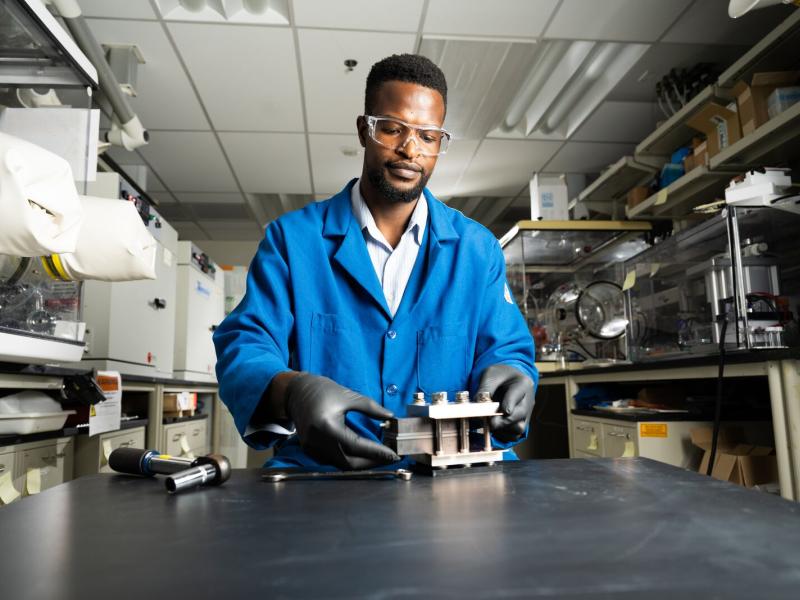
ESMI Research
ESMI Research
Bridging R&D Gaps with a Digital Thread
Bridging R&D Gaps with a Digital Thread
Although progress has been made in recent years, energy storage technology development has taken decades. For example, research on lithium materials and chemistry began over 40 years ago, and we are just starting to see batteries deployed broadly in the transportation and grid energy storage markets. On average, the energy density of lithium-ion batteries has increased less than two percent per year over this 40-year period. One primary challenge in rapidly designing and developing new materials and chemistries for battery applications is the lack of a fundamental, integrated understanding of the relationships between material structure and properties with prototyping performance. Working across scales in complex battery systems that involve disordered materials, nonequilibrium interfaces, and continuous reactions under electrochemical cycling has been a continuing challenge.

Using organic redox flow batteries as the model system, the ESMI team is addressing this fundamental challenge by incorporating physics-informed data-based models to build a digital twin of a redox flow battery that integrates experimentation, modeling, and data across traditionally siloed scales to accelerate the energy storage development. A digital twin of a battery is a digital replica of a physical battery with data (both experimental and simulated) transmitted seamlessly between the physical and digital systems. The team is creating an innovative digital twin of a battery that integrates experimentation, physics models, and data science to achieve predictive redox molecule design and rapid prototyping validation that link molecular structure and functionality with device performance.
The three-year ESMI program is organized into three focused “thrust” areas to accelerate development of a new generation of energy storage materials and chemistries that deliver improved performance, safety, life cycle, and cost reductions. These thrust areas are outlined below.

Thrust 1: Rapid Redox Molecule Design
Starting from redox active organic materials, research in this thrust will develop new molecular design approaches. These approaches will rapidly identify, synthesize, and characterize new materials and formulate them into high-performance flow battery electrolytes. Thrust 1 addresses the challenge of the predictive design by establishing a molecular quantum descriptor and major functionalities database and working with Thrust 3 to establish a machine learning model. This model will correlate the molecular structure with its functionalities, which will be assisted and validated by high-throughput organic synthesis and electrolyte characterization.
Thrust 2: Cross-Scale Validation
Research in this thrust will develop experiments, modeling capabilities, and approaches for rapid testing and validating of the properties and performance of the redox active materials in flow cells under realistic conditions across scales. Thrust 2 will establish the physics model of the redox flow battery first and collaborate with Thrust 3 for the scaling of the flow battery model. The modeling work in this thrust will be assisted and validated through parallel prototyping of redox flow cells at corresponding scales.
Thrust 3: Digital Twin of a Battery
Establish theoretical and digital frameworks that integrate the experimental data and physics principles to predict the properties and performance of new energy storage materials using the latest computational tools. Thrust 3 addresses the challenges in two distinct steps:
- Establish the components
- Integration into the digital twin.
Thrust 3 will be supported by the experimental and simulation data provided from Thrusts 1 and 2. Thrust 3 will also house the machine learning capabilities to integrate the measurement and numerical approaches across all three thrusts.


